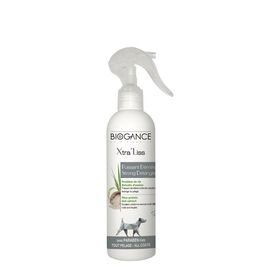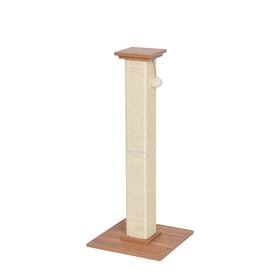The Turkish Van, which hails from Turkey’s Lake Van region, has distinct, very ancient and completely natural origins, and is not to be confused with its cousin, the Turkish Angora. The breed is rare, even in its native country, where it is considered a regional treasure.
Origins
The Turkish Van’s birthplace is in Turkey’s Far East, on the shores of Lake Van. This mountainous, volcanic and isolated region is rather difficult to access, which explains why the cat’s genetics have maintained their uniqueness. The Turkish Van can be found in the oral and written traditions of Eastern Anatolia as early as the Middle Ages, possibly dating back to the occupation of Armenia by the Romans (75-387 AD).
Despite its ancient origins, the Turkish Van was first bred only in the second half of the 1950s. Laura Lushington and Sonia Halliday were travelling through Turkey, taking photos of tourist sites, when they noticed the beautiful and unique colour pattern of the region’s sturdy cats. They were offered two white-haired kittens with a few brown markings on the head and tail.
After returning to Great Britain, the two kittens (a male and a female from different litters) were used as foundation stock for the breed, which was finally recognized in Europe in the late 1960s and was first brought to the United States in 1982. Still today, there are very few Turkish Vans around the world, and those that are registered can trace their ancestry back to one of the original cats imported by Laura Lushington or some of the kittens she imported in the following years.
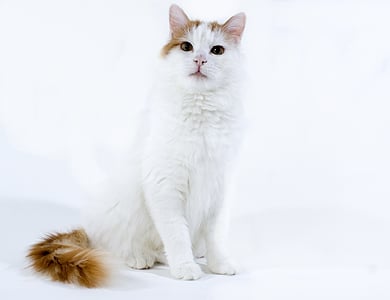
Morphology and appearance
The Turkish Van is a large cat. Males can reach a healthy weight of 8 kg, and females, up to 6 kg. Its growth is longer than normal, lasting up to five years. With its muscular build, this long, strong cat is particularly agile, and honours its ancestors, which had to adapt to the difficult conditions of their country of origin.
Its coat, another of its characteristics, is attributed to the breed’s adaptation to the harsh climate of its native country. Winters in Turkey’s Lake Van region are particularly cold and snowy, while the summers can be quite hot. Turkish Vans do some impressive shedding, going from a semi-long, dense coat, with practically no undercoat, that is almost waterproof in winter, to a short coat that keeps the cats cool in the summer. The tail maintains all of its panache, and the belly and rear end remain fluffy, even in summer. The cat’s cashmere-like coat is very soft to the touch.
The Turkish Van’s bicolour coat is mainly white (80% minimum). The coloured parts are strictly on the tail and the top of the head. This unique colour distribution is referred to as the Van pattern. Traditionally, the first Turkish Vans had only brown or brown tabby markings. Today, however, the Van’s markings come in multiple shades. Breed standards require the Van pattern, but allow for a few small spots on the back. According to different cat associations around the world, accepted colours may be limited. The eyes are large and expressive, and can be shades of amber or blue. Vans can also be odd-eyed (having one eye of each colour).
Level of maintenance (grooming)
The Turkish Van has two distinct shedding periods each year, during which it is recommended that the cat be brushed daily, especially in spring to avoid having it ingest too much hair. The rest of the year, weekly brushing is suggested. To make brushing a pleasant experience, it’s best to get your cat used to it as soon as possible and to always associate grooming with something enjoyable.
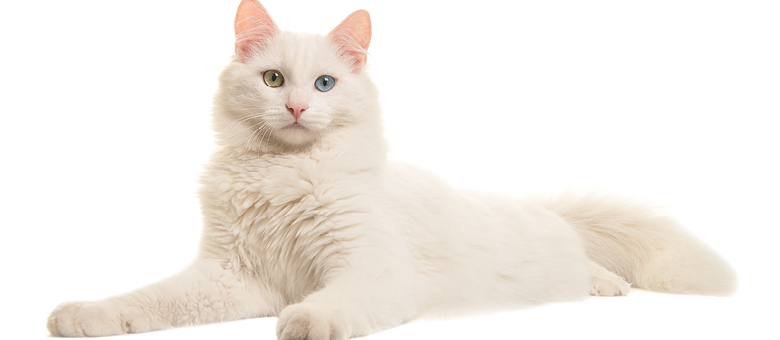
Behaviour
Turkish Vans have a reputation for liking water, to the point where they are nicknamed swimming cats. Although there’s no guarantee that all members of the breed will enjoy swimming like their ancestors, you can always encourage your cat with rewards if it ventures into the bath or shower.
Despite their size, Vans are not afraid of climbing, and love exploring their environment. Lively, curious and intelligent, they will enjoy living in either a house or an apartment, provided they have large enough accessories, such as a litter box and scratching post, at their disposal. They will be happiest if they have a variety of autonomous activities to keep them busy, such as interactive bowls and high places to explore. Thanks to their genetic baggage, Turkish Vans are sturdy and generally adapt well, making them excellent lifelong companions.
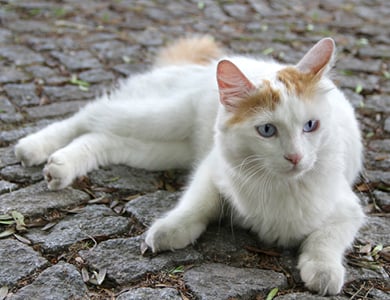
Unusual facts
For several centuries, a variety of naturally occurring cats with an often feral status have been living in Turkey’s Lake Van region. They are known as Van cats, which is the literal translation of the Turkish Van kedesi. They are not a recognized breed, since they are not handled by humans, and are believed to be the basis of the Turkish Van breed. They are practically all white, sometimes with brown markings on the head or near the tail. Their eyes are often mismatched colours (one amber, one blue). Vans cats have been observed swimming in Lake Van. This may be the source of the popular belief that Turkish Vans are fond of water.
Moreover, Turkish Vans born entirely white (with no markings) are generally not recognized by cat associations. Some associations classify them as a distinct breed. The World Cat Federation recognizes them under the name Turkish Vankedisi, meaning a pure white-coated Turkish Van. They should not, however, be confused with Van cats, even though the names are quite similar.


